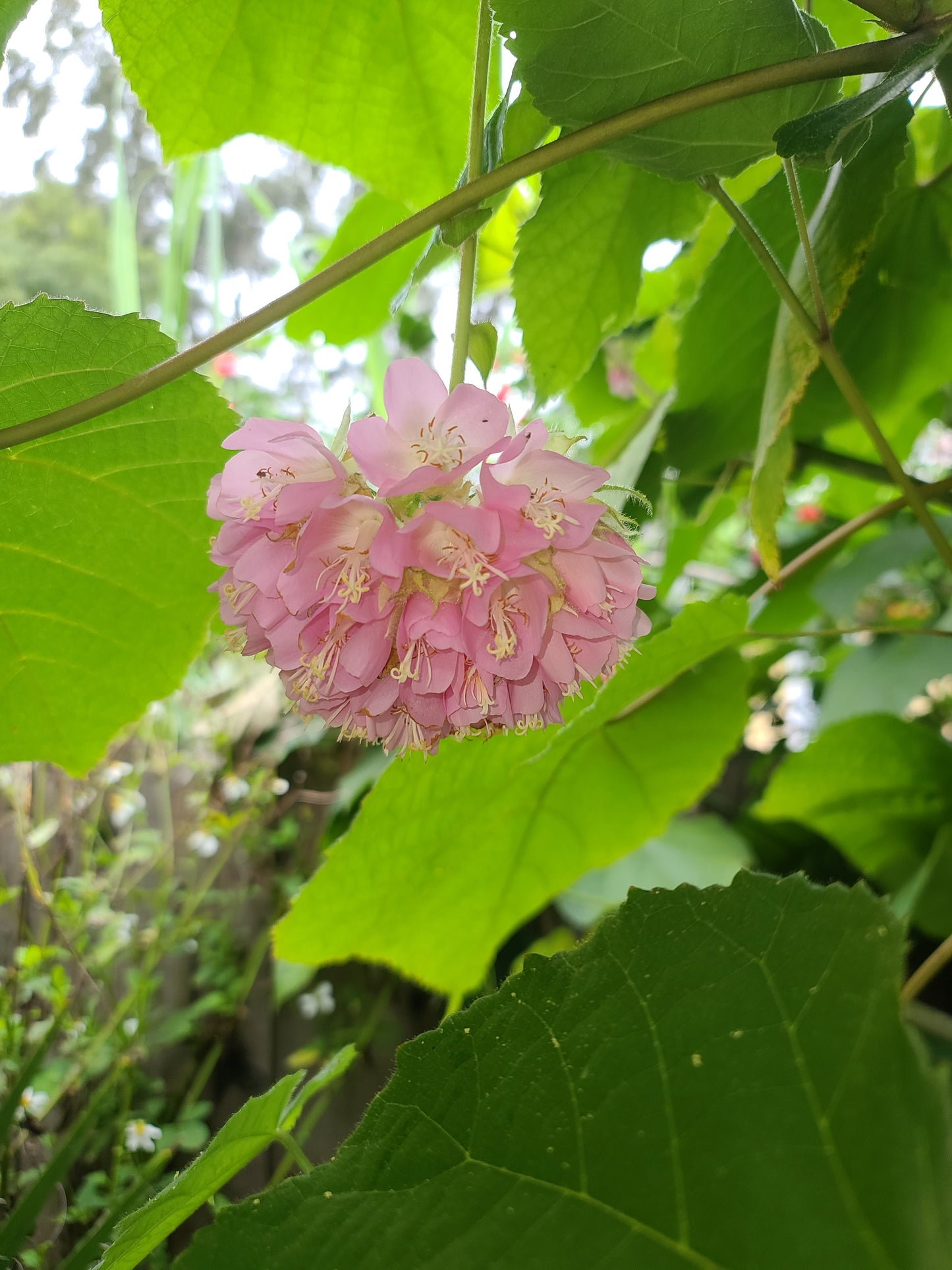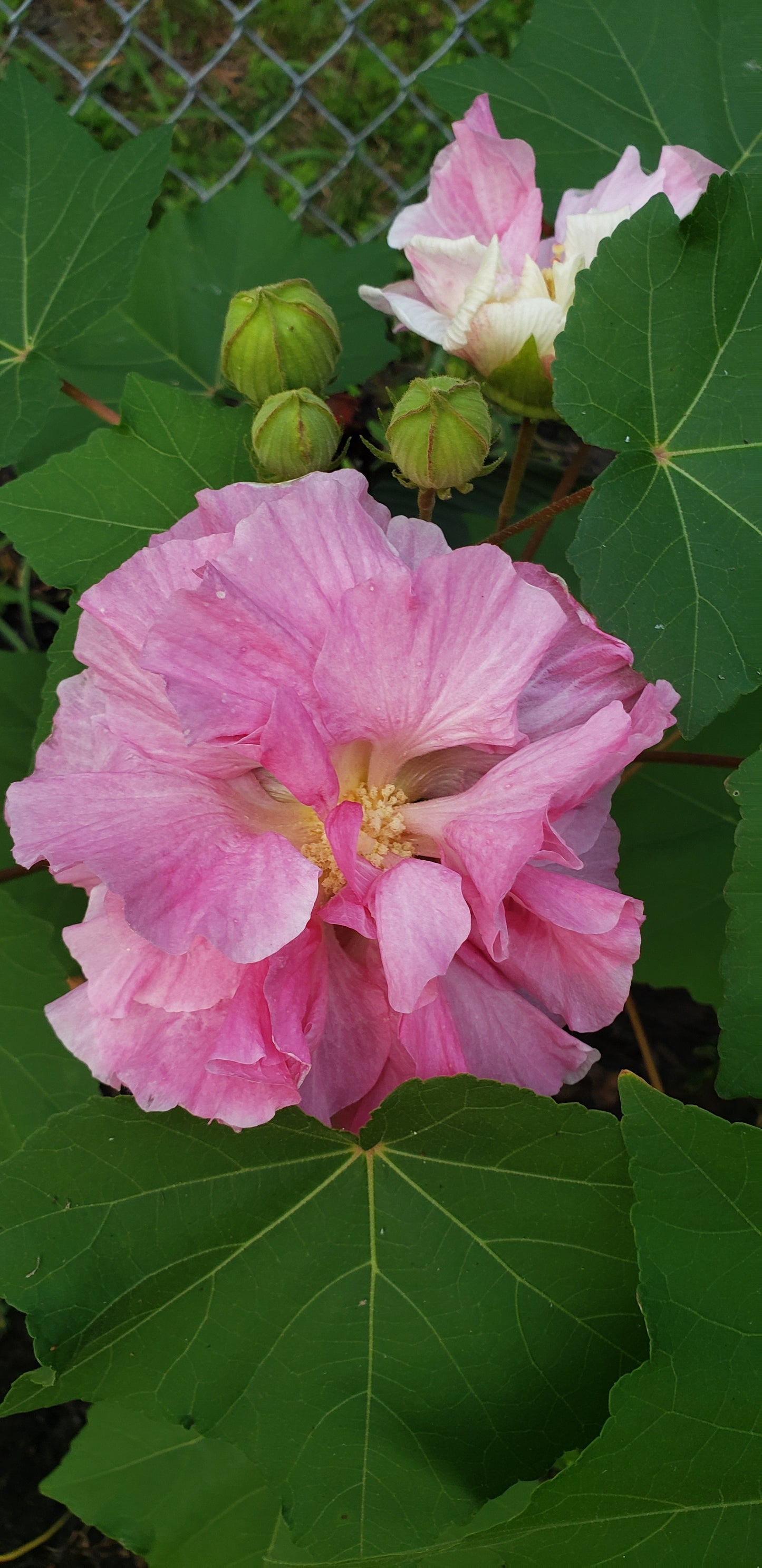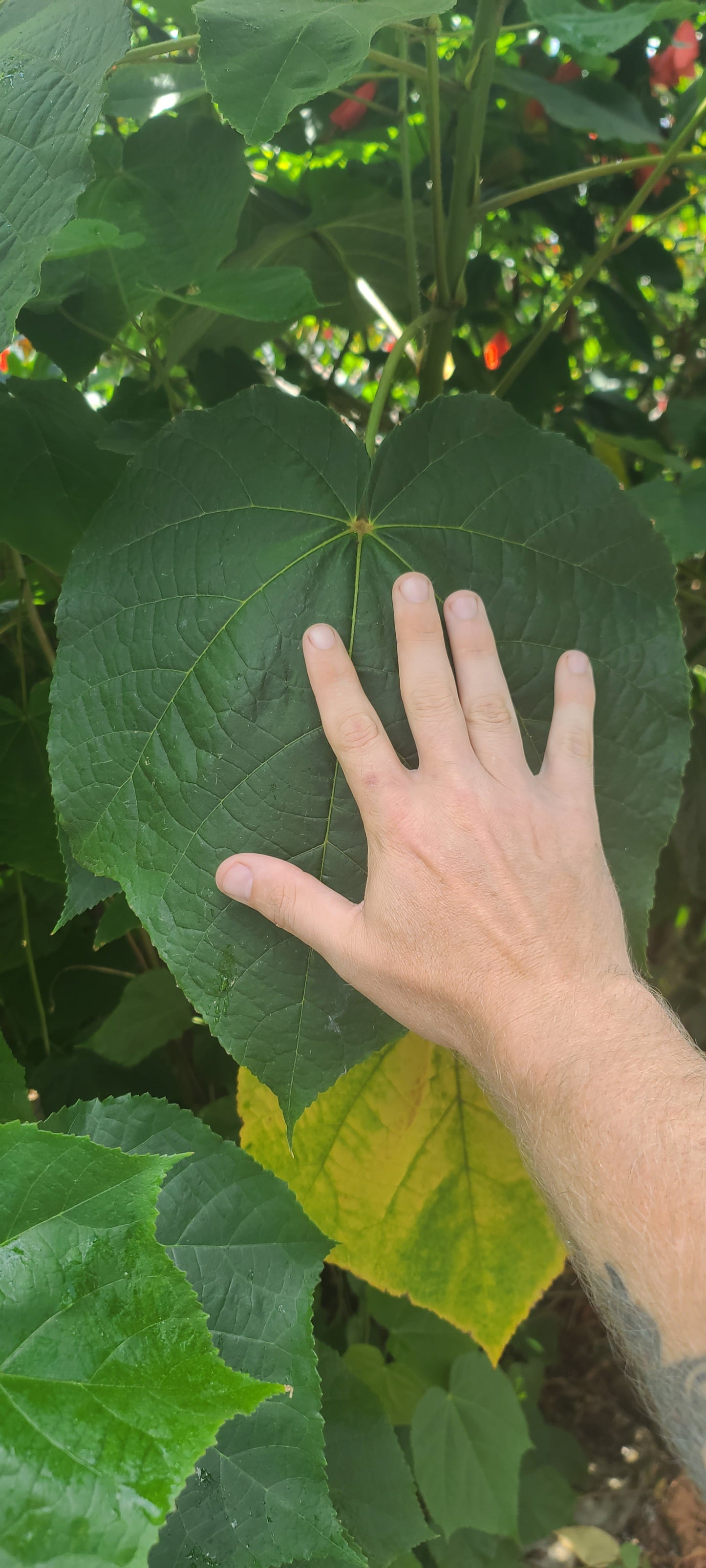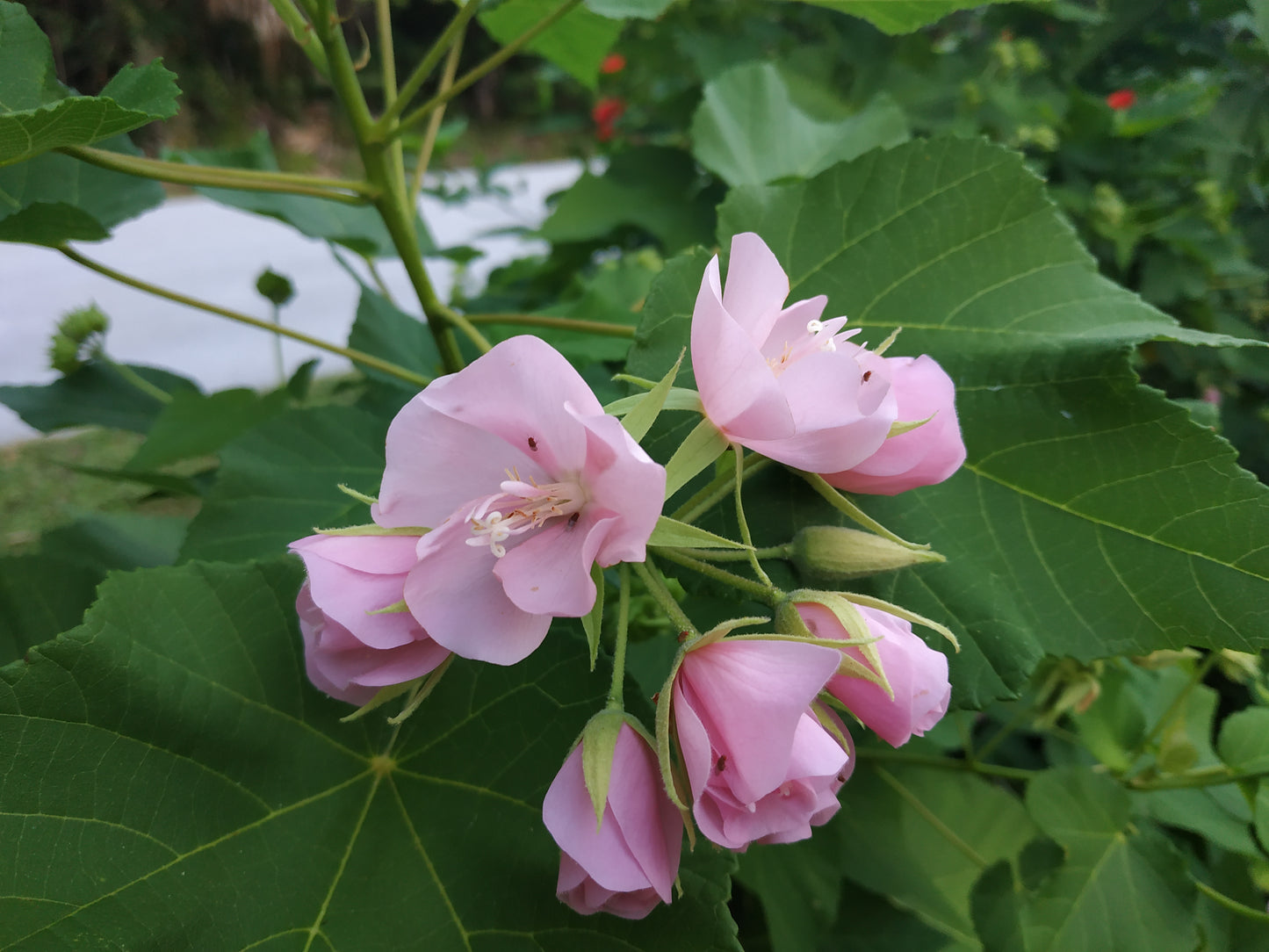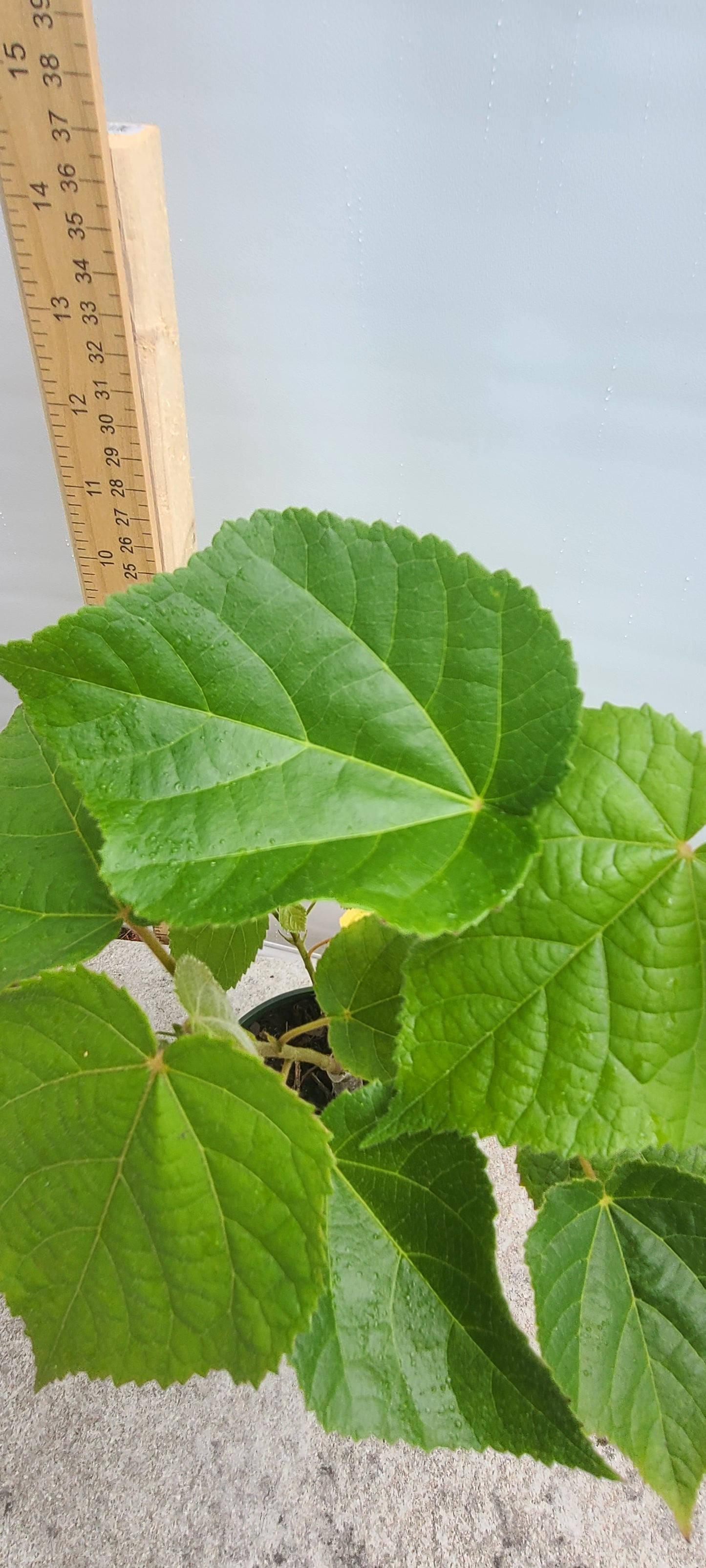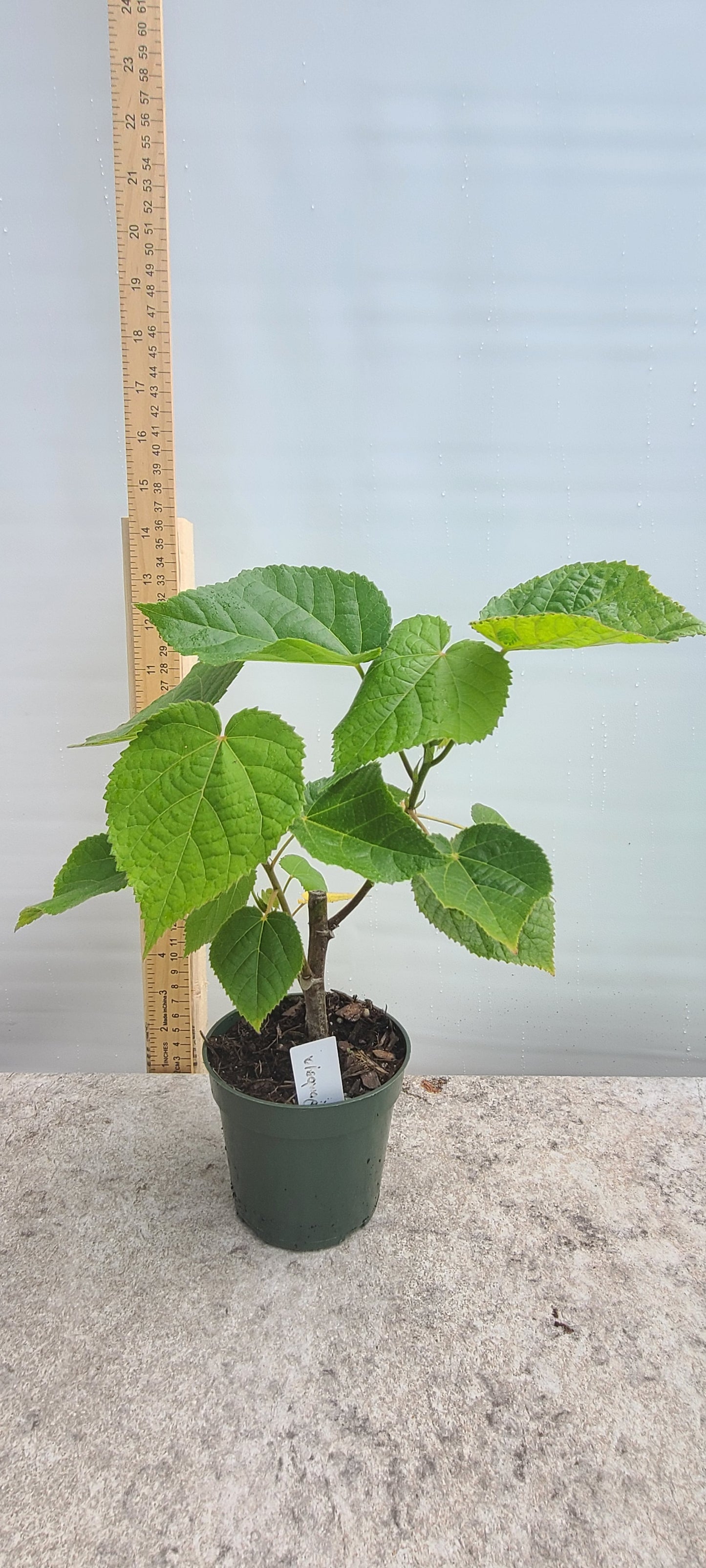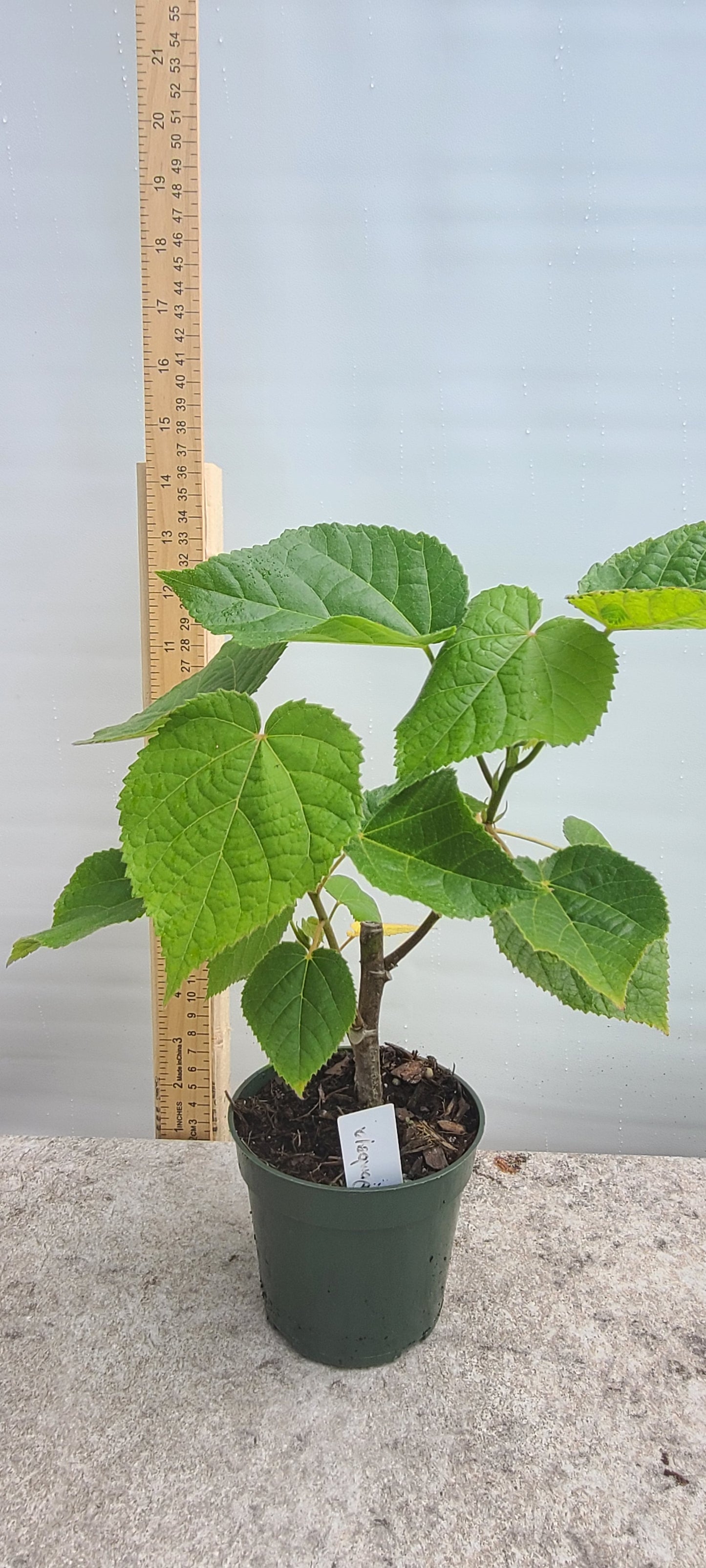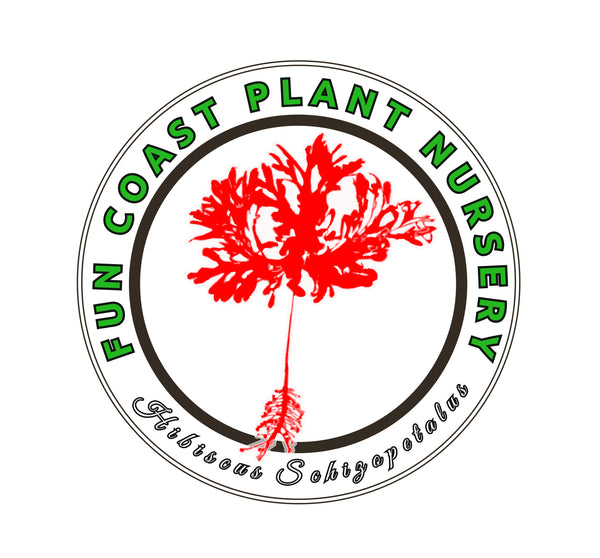Fun Coast Plant Nursery
Tropical Hydrangea (Dombeya wallichii) Live Rooted Cutting Pint Pot
Tropical Hydrangea (Dombeya wallichii) Live Rooted Cutting Pint Pot
Couldn't load pickup availability
Dombeya wallichii "Pink Ball Tree" / "Tropical Hydrangea"
Scientific Name: Dombeya wallichii
Common Name: Pink Ball Tree, Tropical Hydrangea
Plant Type: Evergreen shrub, Tree
Family: Malvaceae (Mallow family)
Overview:
The Pink Ball Tree (Dombeya wallichii), also known as the Tropical Hydrangea, is an extraordinary tropical plant prized for its stunning, large clusters of soft pink flowers that resemble the blooms of a hydrangea. Native to Madagascar, this evergreen shrub or small tree is perfect for warm, tropical, and subtropical gardens. It can grow up to 20 feet (6 meters) tall, developing a rounded, bushy canopy that creates a striking visual display with its vibrant pink blooms. The tree’s dense clusters of flowers appear in late winter to early spring, making it a beautiful focal point when many other plants are still dormant. With its glossy, dark green leaves and fragrant, ball-shaped flowers, Dombeya wallichii is a standout in any garden, providing both ornamental and seasonal appeal.
Origin and Ecosystem:
Dombeya wallichii, commonly known as the Pink Ball Tree or Tropical Hydrangea, is native to Madagascar and Mauritius, where it thrives in tropical and subtropical climates. It grows naturally in moist forests, coastal regions, and mountain slopes with well-drained soils. The plant is adapted to warm, humid environments, flourishing in areas with regular rainfall and partial to full sunlight. In its native habitat, it can often be found growing in the understory of tropical forests or in more open, sunny spots, where it forms dense clusters of blooms. Due to its adaptability, the Pink Ball Tree is now also grown in tropical and subtropical regions around the world.
Cultural and Historical Significance:
Dombeya wallichii has been cultivated for its beauty, particularly for its large, globe-shaped clusters of pink flowers that resemble hydrangeas. It is often admired as a garden ornamental and is particularly valued in tropical landscaping for its striking appearance and ability to create a lush, vibrant atmosphere. While not known for deep cultural significance, it has become an iconic plant in tropical gardens, adding a touch of tropical elegance. The common name Tropical Hydrangea comes from the plant’s hydrangea-like flower clusters, though it is not a true hydrangea. It is often included in botanical gardens and native plant collections as a beautiful, eye-catching specimen.
Ecosystem Contribution:
Dombeya wallichii serves an important ecological role in its native ecosystem. Its showy, fragrant flowers attract a variety of pollinators, such as bees, butterflies, and hummingbirds, which are crucial for maintaining biodiversity in tropical environments. These pollinators help facilitate the reproduction of many other native plant species, contributing to the health of the ecosystem. The Pink Ball Tree’s dense foliage also provides shelter for small animals and insects. Additionally, the plant’s large leaves contribute to the local water cycle by capturing moisture from the air, while its root system helps with soil stability and erosion control in the areas where it grows.
Global Adaptation and Cultivation:
Dombeya wallichii is widely cultivated in tropical and subtropical regions around the world, including parts of Africa, Florida, Hawaii, and Southern California. It is a popular choice in tropical gardens, botanical collections, and landscape designs due to its striking clusters of pink flowers and its ability to create a lush, tropical atmosphere. The tree can grow up to 20 feet (6 meters) in height and has a bushy, rounded canopy, making it an excellent specimen plant. The plant requires regular watering and thrives in well-drained, fertile soil, though it is relatively low-maintenance once established. It prefers full sun to partial shade and benefits from warm, humid conditions. While it is frost-sensitive and typically grown in tropical and subtropical climates, it can be cultivated in containers and moved indoors during cooler months in colder areas.
Mature Size:
-
Height: 10 to 20 feet (3 to 6 meters)
-
Spread: 6 to 10 feet (1.8 to 3 meters)
-
Growth Rate: Moderate
Light Requirements:
-
Full sun to partial shade. While the Pink Ball Tree prefers full sun for optimal blooming and growth, it can tolerate some afternoon shade, especially in hotter regions. In cooler climates, providing it with more sun will encourage the best flowering. The tree thrives in bright, indirect light in more temperate zones or indoors but will bloom less profusely if light is insufficient.
Watering Needs:
-
Moderate to high. Dombeya wallichii enjoys consistently moist, well-drained soil but should not be kept soggy. During its active growing season (spring through summer), water the plant regularly to keep the soil evenly moist, but ensure that it drains well to prevent root rot. In fall and winter, reduce watering as the plant enters a period of dormancy or slower growth. For best results, water at the base of the plant to avoid wetting the foliage, which could lead to fungal issues.
Soil Requirements:
-
Well-draining, rich, loamy soil. Dombeya wallichii thrives in moist, fertile soil that is well-drained. A slightly acidic to neutral pH (6.0 to 7.0) is ideal. While it is adaptable to a variety of soil types, it will grow best in a soil mix rich in organic matter. If you have heavy, clay-like soil, amend it with compost or organic matter to improve drainage. Ensure that the soil is well-drained to avoid waterlogging, which can damage the plant's roots.
Foliage and Flowers:
-
Foliage: The leaves of the Pink Ball Tree are large, glossy, dark green, and slightly lobed, with a broad, tropical appearance. These leaves provide a rich, lush backdrop to the spectacular blooms, enhancing the plant’s overall ornamental value. The foliage remains evergreen in tropical climates, creating year-round interest. In colder climates, it may shed some of its leaves in the winter but will still maintain a shrub-like shape.
-
Flowers: The main attraction of Dombeya wallichii is its profuse clusters of round, ball-shaped flowers, which bloom in shades of pale pink to deep rose. The flowers are soft and fragrant, appearing in large, dense bunches that create a striking display when they cover the tree. Each flower cluster is made up of hundreds of tiny, delicate blossoms that give the appearance of a "ball" of color, earning the plant its common name. The blooms typically appear in late winter to early spring, brightening up gardens when few other plants are in bloom.
-
Flowering Season: The plant blooms in late winter to early spring, often when many other plants have not yet begun to flower. The long-lasting blossoms add seasonal interest and can be a valuable source of nectar for bees, butterflies, and hummingbirds.
Seasonal Interest:
-
Spring/Summer: Dombeya wallichii is actively growing during the spring and summer months. The vibrant pink flower clusters will be in full bloom, creating an eye-catching display and attracting pollinators. The dense, glossy foliage provides a lush background for the flowers.
-
Fall/Winter: In milder climates, the tree continues to provide ornamental value with its evergreen leaves. In colder climates, it may lose some of its leaves but remains an attractive shrub or tree. Flowering is typically limited to the late winter or early spring months, making it a seasonal highlight.
Care Instructions:.
-
Fertilizing: Feed the Pink Ball Tree with a balanced fertilizer in the spring, right before new growth begins. A slow-release fertilizer or one formulated for flowering plants is ideal, as it will promote blooming and overall health. Avoid fertilizing in late fall or winter, when the plant is dormant.
-
Pests/Diseases: Dombeya wallichii is relatively pest-resistant but can sometimes attract aphids or scale insects, particularly when grown in humid environments. Treat any pest issues with insecticidal soap or neem oil. Root rot can be a concern if the soil is too heavy or poorly drained, so ensure that the plant is grown in well-draining soil. Powdery mildew can also affect the plant in overly humid conditions, so avoid wetting the leaves during watering and ensure proper air circulation.
-
Mulching: Apply a light layer of mulch around the base of the plant to help retain moisture and keep the roots cool. Be careful not to pile the mulch against the trunk, as this can cause rot. A thick mulch layer can also help protect the plant’s roots from frost in colder climates.
Uses in the Landscape:
-
Specimen Plant: Dombeya wallichii is an excellent specimen plant, with its striking flowers and attractive structure making it a focal point in the garden. Its tall, branching form can be used to add vertical height to flower beds or borders.
-
Tropical or Subtropical Gardens: This plant fits beautifully into tropical or subtropical gardens, where its large, fragrant flowers add a touch of elegance and charm. Its evergreen foliage provides a lush, tropical backdrop throughout the year.
-
Hedges and Screens: If grown as a shrub, the Pink Ball Tree can serve as a natural hedge or privacy screen. Its dense foliage and height can provide both visual interest and privacy in the garden.
-
Pollinator Gardens: Due to its fragrant flowers and abundant nectar, Dombeya wallichii is an excellent addition to a pollinator-friendly garden, attracting bees, butterflies, and hummingbirds.
-
Cut Flowers: The long-lasting, fragrant blooms make the Pink Ball Tree a wonderful choice for cut flower arrangements. The ball-shaped clusters look beautiful in vases and can be used to add color and fragrance to indoor spaces.
Hardiness Zone:
-
USDA Zones 10–11. Dombeya wallichii is a tropical plant that thrives in USDA Zones 10 and warmer, where it can grow as an evergreen shrub or small tree. In colder climates, it can be grown in containers and brought indoors during the winter or treated as an annual. In regions with mild winters, the plant may die back but can regenerate in the spring.
Special Features:
-
Striking Blooms: The Pink Ball Tree’s large, spherical clusters of pink flowers make a dramatic statement in the garden, offering both color and fragrance.
-
Tropical Appeal: With its glossy, tropical foliage and vibrant blooms, Dombeya wallichii adds an exotic flair to gardens.
-
Evergreen in Warm Climates: In warmer zones, the Pink Ball Tree is evergreen, providing year-round interest with its lush foliage.
-
Pollinator-Friendly: The fragrant, nectar-rich flowers attract a variety of pollinators, including bees, butterflies, and hummingbirds, making it a great addition to any wildlife garden.
The Pink Ball Tree (Dombeya wallichii) is a tropical beauty that brings color, fragrance, and visual interest to gardens. With its large, vibrant flower clusters and glossy, evergreen foliage, it’s an excellent choice for tropical, subtropical, or exotic-themed landscapes. Whether used as a specimen plant, hedge, or cut flower, this plant will surely become a focal point in your garden.
Share
